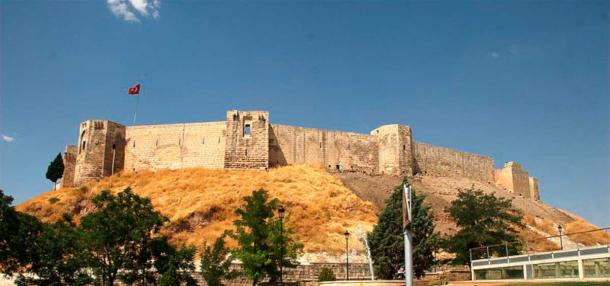
Historic Monuments Including Gaziantep Castle Destroyed in Earthquake
The catastrophic earthquake of magnitude 7.8 that hit Turkey and Syria on Feb. 6, 2023 has caused horrific loss of life and injuries in 10 cities in the affected region. It has also destroyed a number of historical sites, the most prominent of which is Gaziantep Castle.
The castle, with origins dating back nearly 2000 years, collapsed during the earthquake, and stone debris tumbled down the defensive slopes into the local area. The iron railings and retaining wall around the castle also fell.
"Some of the bastions in the east, south and southeast parts of the historical Gaziantep Castle in the central Şahinbey district were destroyed by the earthquake, the debris was scattered on the road," reported Turkish state-run news agency Anadolu.
Gaziantep Castle is completely destroyed after today's earthquake in Turkey.
The castle was built by the Hittite Empire and later built into a main castle by the Roman Empire in 2nd and 3rd centuries AD. pic.twitter.com/6Amv0PfhNT
— Oskar Aanmoen (@OAanmoen) February 6, 2023
The dome and eastern wall of the Şirvani Mosque, located next to the castle, also partially collapsed.
The earthquake has killed over 2000 people and injured thousands, with over 1,700 buildings damaged across 10 Turkish cities. There have been over 18 aftershocks measuring 4 or higher on the Richter scale since the initial tremor.
The Fallen Gaziantep Castle
Gaziantep Castle, locally known as Gaziantep Kalesi, is situated in the center of the town of Gaziantep, in southeastern Turkey.
The site was originally used as a lookout point by Hittites as far back as the 2nd millennium BC. It was later developed by the Roman Empire who built a fort there around the 2nd to 3rd century AD writes, castles.nl.
Over time, this fort was expanded, taking its current form under Byzantine Emperor Justinian I in the 6th century AD. It became a site of military importance during this time, and the fortress was renovated to repair damage, as well as significant development being undertaken.
The southern section was equipped with substructure structures consisting of arched and vaulted galleries. Towers connected with these galleries were built, and the walls were extended to the west, south, and east, up to the edge of the hill. This left the fortification with an irregular circular shape with a diameter of about 100 m (328 ft) and a circumference of 1200 m (4000 ft).
There was once a defensive moat around the castle, and access was via a bridge.
- 3,500 Years Ago, Hittites Sacked and Razed an Unwary City
- Hattusa: The Cursed City of the Hatti and the Hittite Empire

Wall and towers of Gaziantep Castle, before the recent devastation. (Acar54/CC BY-SA 4.0)
In 661 AD, the castle fell to the Umayyads, and stayed under Muslim control until 962 when it was recaptured by the Byzantines.
Turkish Museums relates how successive Muslim powers lost and regained control of this strategic post, and repaired and rebuilt it through the centuries. Then, according to an inscription on the main gate wall, the towers on the main gate and bridge were rebuilt by Suleiman the Magnificent during the Ottoman Empire, around 1557.
- Hurrem Sultan, the Cheerful Rose of Suleiman I
- Mimar Sinan - A Genius Architect for the Ottoman Empire
The historic site was most recently used as the Gaziantep Defense and Heroism Panoramic Museum. It remains to be seen the full extent of the damage, and how much of the original structure will be recoverable.
Top image: The recently destroyed walls of Gaziantep Castle. Source: DHA/ Daily Sabah
By Gary Manners















